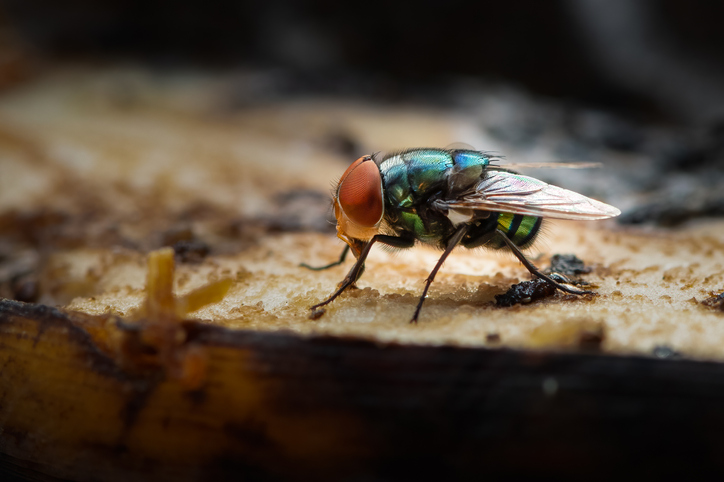Can Flies Bite?
Can Flies Bite?
Yes, certain fly species can bite. While the common housefly does not bite, species like horseflies, deer flies, and some gnats do. These flies are attracted to movement and warmth, and their bites can be painful. Understanding which flies bite and how to manage them is crucial for health and comfort.
The Surprising Truth About Flies and Bites
When we think of flies, we often picture the common housefly, harmlessly buzzing around our homes. However, the world of flies is vast and varied, and some members of this insect family are equipped to do more than just buzz – they can bite. Let’s explore this surprising aspect of certain fly species and understand what it means for us.
Not All Flies Bite
The first thing to understand is that not all flies are capable of biting. The common housefly, for example, doesn’t bite; it feeds on liquid substances and doesn’t have the mouthparts necessary for biting. However, other species, such as horseflies, deer flies, and certain types of gnats, are equipped with biting mouthparts. These flies are not just annoying; their bites can be quite painful.

Save $50
on your first recurring service today with code GET50
Why Do Some Flies Bite?
Biting flies are generally looking for blood. Female horseflies and deer flies, for instance, require blood meals to reproduce. Their bites are not only painful but can also lead to allergic reactions in some people. In addition to the discomfort, these bites can sometimes transmit diseases, making them a health concern.

GET A PERSONALIZED QUOTE
To protect your home from pests, click here for a free pest control estimate. Our Orkin Pros will create a personalized pest treatment plan for your home or business
or Call (866) 249-0292
Recognizing Biting Flies
Understanding which flies are likely to bite can help in managing them. Biting flies are often larger than the common housefly and have different body markings. For example, horseflies are known for their size and large eyes, while deer flies are smaller with patterned wings. These physical characteristics can be key indicators of their potential to bite.
The impact of biting flies extends beyond the immediate pain of their bites. In some regions, they are known to transmit diseases to both humans and animals. For instance, certain types of gnats can spread infections like river blindness. This makes controlling and managing these pests an important health consideration.
Identifying Biting Flies
Understanding the types of flies that can bite is crucial in managing them effectively. While the common housefly is generally harmless, other species pose a real threat with their biting behavior. Let’s delve into how to identify these biting flies and understand their characteristics.
Biting flies, such as horseflies and deer flies, are typically larger than the common housefly. They often have distinctive markings or colors. For example, horseflies are known for their size, robust build, and large, often iridescent eyes. Deer flies are smaller but can be identified by their banded wings and gold or green eyes.
Biting flies are often more aggressive than non-biting flies. They are attracted to movement, warmth, and carbon dioxide, making humans and animals their targets. Unlike common houseflies that hover around food sources, biting flies actively pursue their hosts.
These flies are commonly found in specific environments. Horseflies, for instance, are often near bodies of water, fields, and wooded areas. Deer flies prefer moist environments and are frequently found near lakes, swamps, or pools of water.
Different Types of Biting Flies
- Horseflies – Known for their painful bite, horseflies cut the skin to feed on blood. They are active during the day, especially in warm, sunny conditions.
- Deer Flies – Similar to horseflies, deer flies are smaller and are known for their persistent biting behavior. They are particularly active in humid, wooded areas.
- Sand Flies – These small flies are known for their biting behavior in tropical and subtropical regions. They can transmit diseases like leishmaniasis.
- Black Flies – Often found near streams and rivers, black flies can swarm and bite, causing discomfort and irritation.
- Stable Flies – Resembling the common housefly, stable flies bite and feed on blood. They are often found around livestock but will bite humans as well.
Orkin’s Approach to Fly Control
At Orkin, we understand the discomfort and health risks associated with biting flies. Our approach to controlling these pests includes:
- Inspection – Identifying the type of fly and understanding its behavior.
- Customized Solutions – Implementing strategies tailored to your specific situation.
- Prevention – Offering advice on how to reduce the likelihood of future infestations.
If you’re dealing with a persistent or large-scale fly problem, it’s time to call in the experts. Orkin’s trained professionals can provide effective solutions tailored to your specific needs. Don’t let flies take over your space – reach out to Orkin for assistance.
While not all flies bite, those that do can be more than just a nuisance. Understanding which flies bite and how to manage them is key. Remember, Orkin is here to help with expert advice and effective solutions for all your fly control needs.
Frequently Asked Questions
Can all flies bite?
No, not all flies can bite. The common housefly, for example, does not bite, but species like horseflies and deer flies do.
Why do some flies bite?
Some flies bite to feed on blood, which is often necessary for their reproductive processes.
Are fly bites dangerous?
While most fly bites are not dangerous, they can be painful and may lead to allergic reactions. Some flies can also transmit diseases.
How can I identify a biting fly?
Biting flies are often larger than common houseflies and may have distinctive markings or colors, such as the large eyes of horseflies.
What attracts biting flies?
Biting flies are attracted to movement, warmth, and carbon dioxide.
Where are biting flies commonly found?
Biting flies are often found near bodies of water, in fields, and in wooded or moist environments.
What should I do if I get bitten by a fly?
If bitten by a fly, clean the area with soap and water and apply a cold compress to reduce swelling. Seek medical attention if you have an allergic reaction.
How can Orkin help with fly control?
Orkin provides expert assessment and tailored solutions for fly control, including identifying the type of fly and implementing effective management strategies.
Conclusion
While the common housefly is a non-biter, other species within the vast world of flies do possess this capability. Understanding the distinction between these species is not just a matter of curiosity but of health and safety. Biting flies, such as horseflies and deer flies, can cause discomfort, allergic reactions, and in some cases, transmit diseases. Recognizing these flies and knowing how to manage them is essential for maintaining a comfortable and healthy environment.
Orkin plays a pivotal role in this context, offering expertise and tailored solutions for fly control. From identifying the specific type of biting fly to implementing effective management strategies, Orkin’s approach is comprehensive and grounded in a deep understanding of these pests. Whether it’s through preventive measures or targeted treatments, Orkin’s commitment to effective pest control stands as a reliable resource for those dealing with fly-related issues.

FIND YOUR LOCAL BRANCH
To protect your home from pests, click here for a free pest control estimate. Our Orkin Pros will create a personalized pest treatment plan for your home or business
or Call (866) 249-0292

